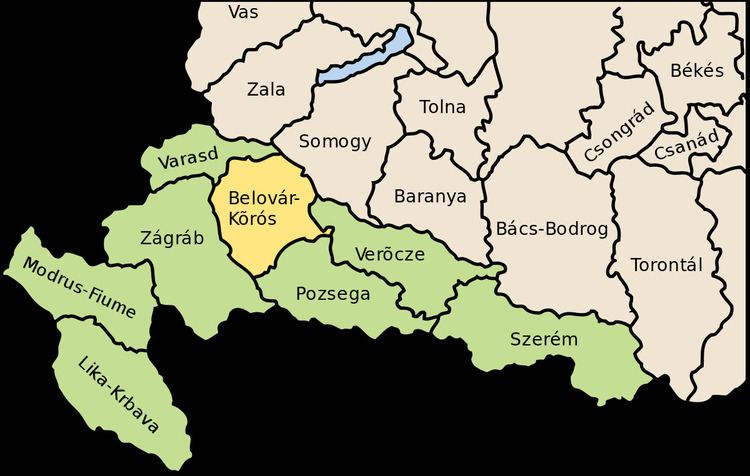1910 5,048 km (1,949 sq mi) | Established 12th century 1910 332,592 | |
 | ||
The Bjelovar-Križevci County (Croatian: Bjelovarsko-križevačka županija; Serbian: Бјеловарско-крижевачка жупанија; Hungarian: Belovár-Kőrös vármegye) was a historic administrative subdivision (županija) of the Kingdom of Croatia-Slavonia. Croatia-Slavonia was an autonomous kingdom within the Lands of the Crown of Saint Stephen (Transleithania), the Hungarian part of the dual Austro-Hungarian Empire. Its territory is now in northern Croatia. Belovár and Kőrös are the Hungarian names for the cities Bjelovar and Križevci, respectively. The capital of the county was Bjelovar (Croatian, in Hungarian: Belovár).
Contents
Geography
The Bjelovar-Križevci County shared borders with the Hungarian county of Somogy, and the Croatian-Slavonian counties of Virovitica, Požega, Varaždin, and Zagreb. The river Drava formed its northeastern border. Its area was 5048 km2 around 1910.
History
The territory of the Bjelovar-Križevci County was part of the Kingdom of Croatia when it entered a personal union with the Kingdom of Hungary in 1102, and with it became part of the Habsburg Monarchy in 1526. Bjelovar-Križevci County was formed in 1886 from the former counties Bjelovar and Križevci. In 1920 by the Treaty of Trianon the county became part of the newly formed Kingdom of Serbs, Croats and Slovenes (later renamed to Yugoslavia). Since 1991, when Croatia became independent from Yugoslavia, the county has been part of Croatia.
Demographics
In 1900, the county had a population of 303,620 people and was composed of the following linguistic communities:
Total:
According to the census of 1900, the county was composed of the following religious communities:
Total:
In 1910, the county had a population of 332,592 people and was composed of the following linguistic communities:
Total:
According to the census of 1910, the county was composed of the following religious communities:
Total:
Subdivisions
In the early 20th century, the subdivisions of Belovár-Kőrös county were:
